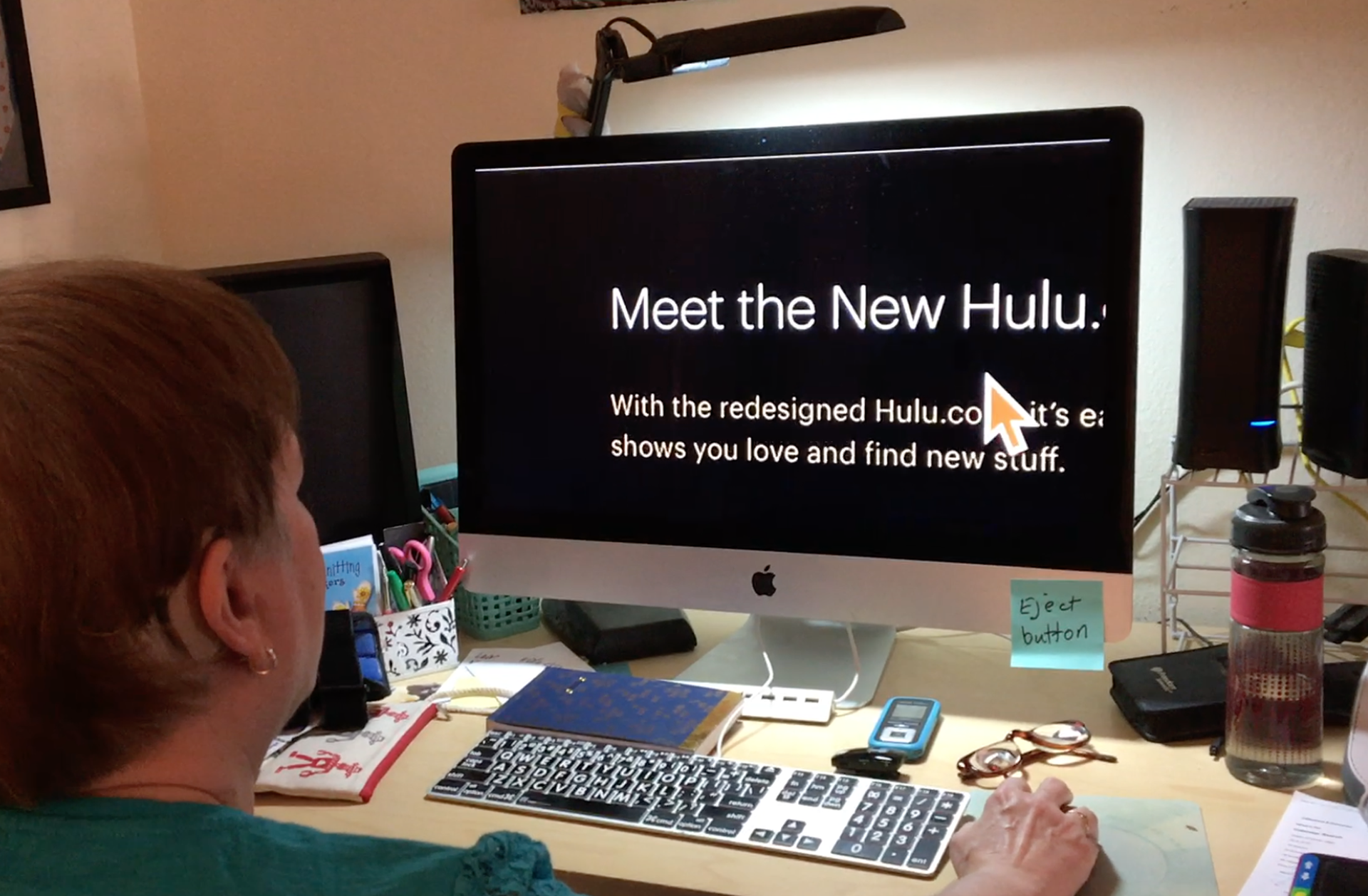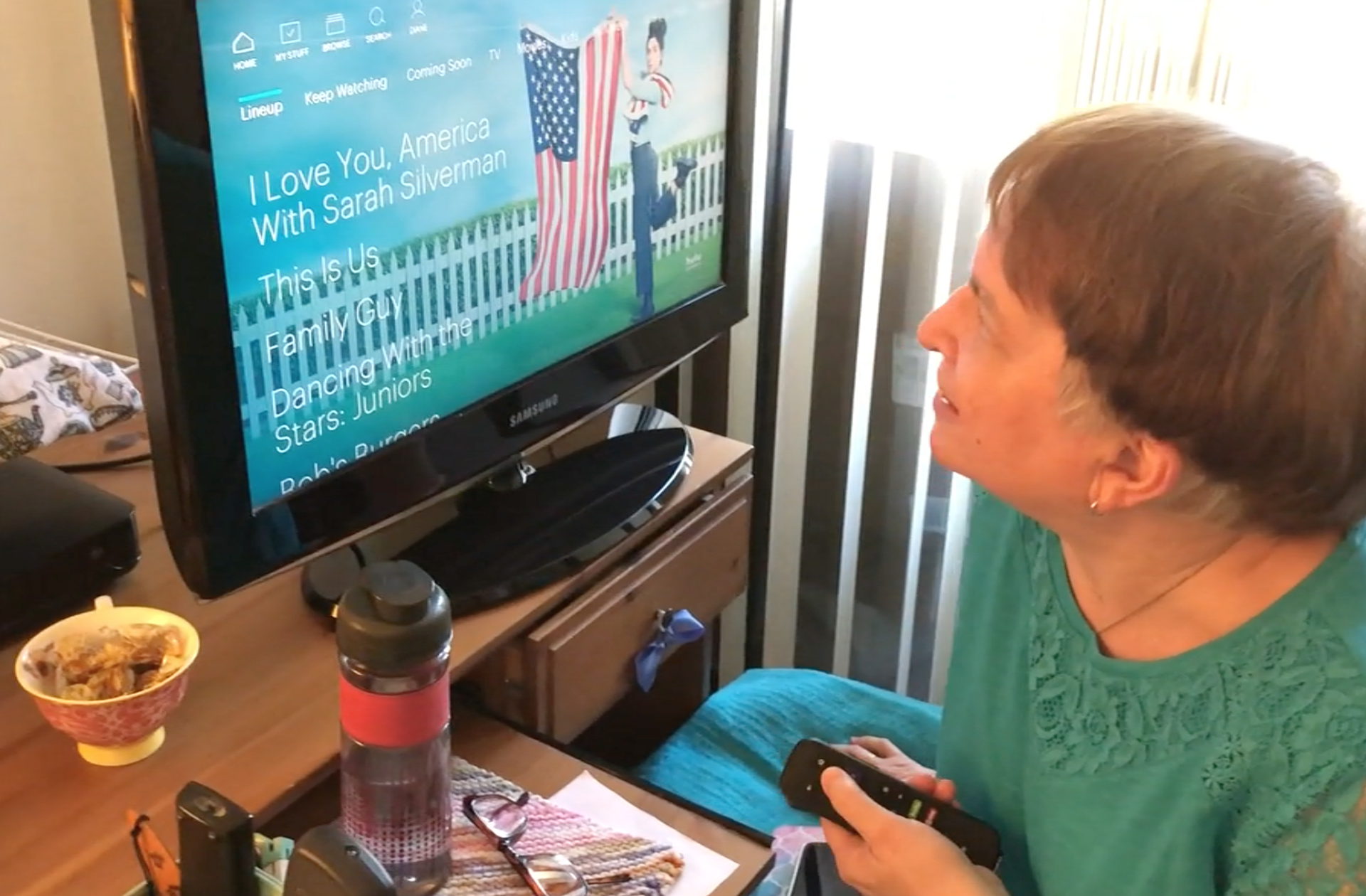Hulu for You empowers people with visual impairments to tailor their Hulu streaming experience based on their needs by providing customized accessibility features.
Project Type / Date
School project / Fall 2018
My Role
• User research
• Conducting user interviews
• Prototyping mockups
• Designing the final presentation
• Conducting user interviews
• Prototyping mockups
• Designing the final presentation
Kicking off the first meeting between Hulu designers and Santa Monica College's Interaction Design students.
As part of my Design for Community Change class, designers and associates from Hulu collaborated with SMC IxD students to address an important challenge:
“How might we design Hulu to be more accessible for people with needs or different challenges when it comes to discovering and/or viewing content?”
While the class was thinking about this question, we were instructed to split into teams of four students each and each group was paired with a Hulu Product Designer who would also be our mentors throughout the semester. Once my team got together with our mentor, we started to discuss the brief. Through our discussion, it was evident that in spite of being taught that accessibility is important in design, none of us truly understood what it was like to be disabled and the challenges that could come with utilizing digital products as a direct result. Because the spectrum of disabilities is so broad, each team was suggested to narrow down and target a specific demographic to design for. From here, we each individually conducted secondary research and then came together to brainstorm and zero in on our target demographic.
After brainstorming, we chose to focus on people with vision impairments.
According to the American Foundation of the Blind, "Some people with difficulty seeing are over 31% less likely to report connecting to the Internet at work, or school and are over 35% less likely to use a computer at home than people without disabilities".
Based on the above statistics, it's apparent that a marginal amount of our world's population is visually impaired and is struggling with using technology. However, visual impairments still sit on a wide spectrum so we wanted to further analyze and learn what this meant.
Through our research, we discovered that although there is a wide range of visual impairments, a majority of technology today is designed for the extremes - those who either have normal vision or who are completely blind. Yet, this leaves out the population of 217 million people who have severe to low vision. We decided to focus on this population, so we started to scout users with severe to low vision who we could interview and learn from.
On to finding participants and conducting user interviews.
Honestly, finding participants was quite an obstacle. We looked everywhere - from local organizations, SMC’s Center for Students with Disabilities, and even Craigslist. Eventually we met Alison* and Daniela* (*Names have been changed due to NDA). We conducted in-home interviews with them where we surveyed their current streaming set-up and how they navigate through Hulu on different devices.
Alison is a young community college student in her 20's who is studying linguistics and business. She has Stargardt’s Disease which progressively damages the macula, a small area of the retina that accounts for sharp vision. She also has cataracts, a medical condition in which the lens of the eye becomes progressively opaque, resulting in blurred vision. She cannot read regular size text on screen so she has to zoom in and out constantly to be able to read text on the screen. She is particularly sensitive to the environment that any external disturbances during her streaming experience will prompt her to hit the rewind option many times as she cannot concentrate while listening and she cannot follow along with the captions.
This is how Alison watches Hulu at home. She attaches her laptop to her large external monitor via an HDMI cable to get an expanded view.
Daniela a retired woman in her 60's and she is the secretary of Board of Directors for the Hearing Loss Association of America. She has Usher Syndrome, a genetic disorder that manifests as hearing loss, and Retinitis Pigmentosa, a degenerative eye disease that negatively affects the retina. As the disease progresses, the field of vision narrows (tunnel vision) until only central vision remains and night blindness occurs. She also has cataracts. She uses a special in-home viewing setup which unfortunately prevents her from watching movies or games with her family.


This is how Daniela watches Hulu at her personal desk. She uses a screen reader and an online magnification tool to read the content.
To really understand and put ourselves in Alison's and Daniela's shoes, we used a mobile app called Aira Vision Sim to simulate different types of eye diseases. Below are screenshots of what their specific visual impairments could look like when trying to navigate through the Hulu interface.
Insights we took away from our user interviews.
Here are the high-level insights we took away from the user interviews:
1. The size of the font is too small
Users have to find work around such as zooming in and out with a trackpad or using external software such as Zoom text. Movies captions are too small.
Users have to find work around such as zooming in and out with a trackpad or using external software such as Zoom text. Movies captions are too small.
2. There isn't enough contrast
Users had to change the background on their laptop settings or with external softwares
Users had to change the background on their laptop settings or with external softwares
3. There is a lack of settings
Lack of consistency of settings between devices and technology. Also Audio description not available at the time.
Lack of consistency of settings between devices and technology. Also Audio description not available at the time.
4. Difficulty in navigation
The current interface is not adapted to people with vision impairment. Often there is no feedback, pop up windows are not visible when zoomed in and it is time consuming.
The current interface is not adapted to people with vision impairment. Often there is no feedback, pop up windows are not visible when zoomed in and it is time consuming.
Based on these insights, we acknowledged that:
- Visually impaired users should be able to control the size, font, and color of captions and text, even if it takes up half of the screen.
- Users who don’t have total vision loss still want to be able to control the service manually and not just with their voices.
- Despite people with vision impairment feeling like they aren’t heard, they are capable and eager to learn or create solutions for the challenges they face.
Developing our design concept and prototype based on our insights.
In developing our concept, we recognized that we wanted users to have authority in customizing their own Hulu experience based on their personal accessibility needs. So we came up with the concept called "Hulu For You" where customizable accessibility features are embedded throughout the sign-in process and in the user’s profile manager. By enabling these features throughout the entire Hulu interface, this will facilitate and centralize user’s needs in one seamless experience.
Here is our final interactive prototype - Hulu For You.